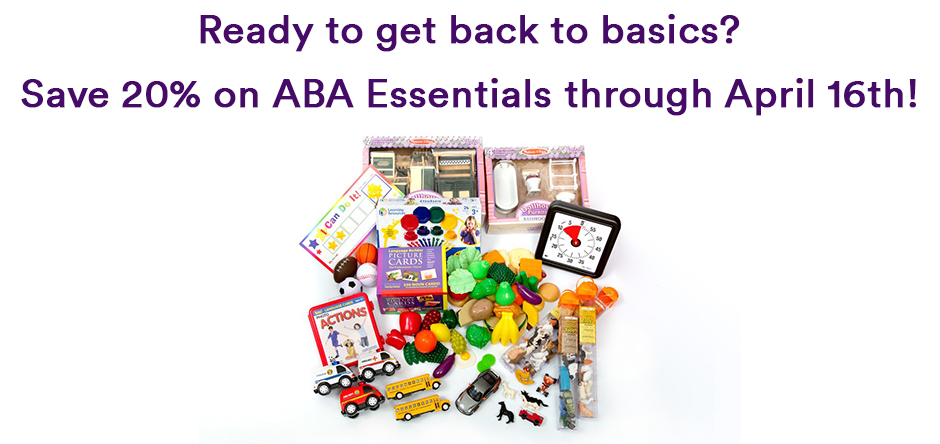Applied Behavior Analysis (ABA) is the practice of the science of behavior. Often misunderstood as a collection of techniques (or worse, one particular technique), ABA is much more complex and is based in analysis so that all interventions are individualized, functional, and effective. That being said, there are some core strategies that are useful to know about in the application of ABA to individuals with autism.
• Reinforcement is probably the best known and most widely recognized ABA strategy. The principle of reinforcement is simple: behavior that is followed by preferable outcomes increases in future probability. If the preferable outcome is something given, like praise, a toy, or a fun activity, that’s called positive reinforcement. If the preferable outcome is something taken away, like work being removed during a break, or an unpleasant noise stopping, that’s called negative reinforcement. Contrary to popular belief, negative reinforcement is not the reduction of behavior or the application of punishment. Both positive and negative reinforcement are highly individualized and will look different for different people, but the principles remain the same no matter who you are: behavior increases because it is followed by a preferable outcome.
• Prompts are another commonly used strategy in ABA, and they also look different for different people. Prompts are any stimuli added to the natural environment to make behavior more likely. We all use prompts throughout our daily lives, often without realizing it. Smart phone reminders, highway signs, and fire alarm bells are all every day prompts. Additional prompts may be added to support individuals with autism in many ways. For example, some children with autism are taught to follow activity schedules, which are prompts for sequences of actions. These prompts may be used to help the child to be more independent in an activity of daily living, like making a sandwich, or just to transition between play activities and remain actively and appropriately engaged for longer periods of time.
• Structured teaching procedures are often used to break down and teach important skills such as communication, social skills, self-care skills, and academics. Sometimes these procedures are highly structured and repetitive, such as discrete-trial teaching, and sometimes they are looser and less structured, such as natural-environment teaching. Most individuals with autism who are learning using these strategies are provided with a combination of more and less structured learning opportunities, depending on their individual needs.
• Self-management is the set of skills that enables independence. For many individuals with autism, these skills need to be explicitly taught. ABA programs should include opportunities to learn and use self-management skills, as the ultimate goal of any ABA intervention should be independence.
About The Author
Dana Reinecke is a doctoral level Board-Certified Behavior Analyst (BCBA-D) and a New York State Licensed Behavior Analyst (LBA). Dana is an Assistant Professor and Department Chair of the Department of Special Education and Literacy at Long Island University Post. Dana provides training and consultation to school districts, private schools, agencies, and families for individuals with disabilities. She has presented original research and workshops on the treatment of autism and applications of ABA at regional, national, and international conferences. She has published her research in peer-reviewed journals, written chapters in published books, and co-edited books on ABA and autism. Current areas of research include use of technology to support students with and without disabilities, self-management training of college students with disabilities, and online teaching strategies for effective college and graduate education. Dana is actively involved in the New York State Association for Behavior Analysis (NYSABA), and is currently serving as President (2017-2018).

